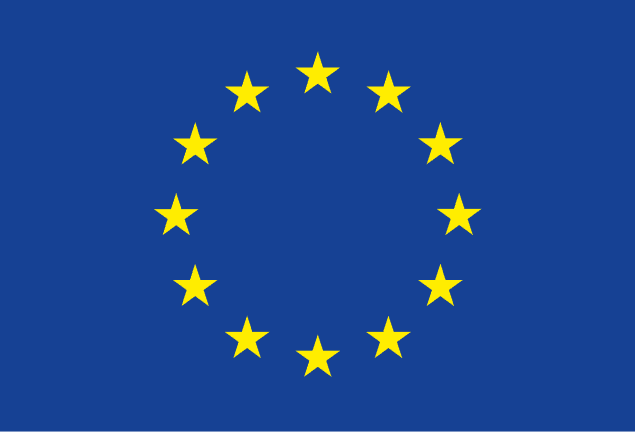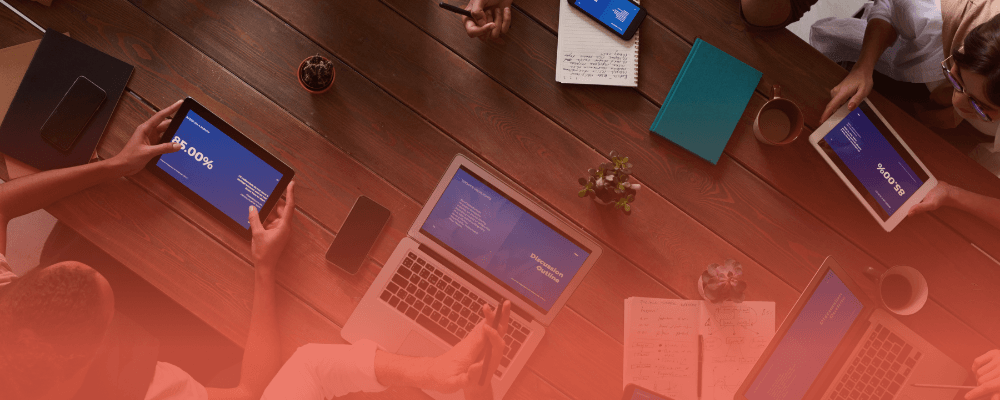If you’re responsible for digital, IT, or e-commerce in a manufacturing or distribution company, you might recognize this scenario:
- A CMS that technically works, yet any bigger modification turns into a battle.
- Channel-to-channel inconsistency in how content is displayed.
- Simple updates stuck in a loop between departments.
- Ongoing tension between speed, safety, and integration needs.
Headless CMS is positioned as the solution. But is it? You need solid proof that moving away from your current setup will genuinely solve these issues.
Let’s start with three concrete numbers:
1. Headless CMS sites report 65% fewer security incidents compared to traditional CMSs (Source: Sucuri security report).
2. 84% of technology leaders said their current CMS keeps the organization from unlocking the full value of content (Source: Hygraph report “Future of content”, insights from 400 tech leaders).
3. Websites built with headless CMS frameworks load 38% faster on average than traditional CMS sites (Source: Worldmetrics).
As you read on, we’ll clarify how each statistic affects your business – especially when your growth depends on rich content delivered across multiple channels, and what you need is more than simply “a nice website.”
First, a quick definition: what is a headless CMS?
You can think about content management systems in two ways:
a) Traditional CMS
- Website and CMS are tightly glued together.
- One system tries to do everything: store content → render pages → manage templates → handle plugins and themes → often manage user logins.
b) Headless CMS
- The CMS separates the head (front-end: website, app, portal) from the body (back-end: content, rules).
- It stores and structures content, then exposes it via APIs.
- Your website, mobile app, marketplace feeds, or internal tools consume this content, but each can be built independently.
As research shows, 41% of organizations still rely on traditional CMSs. The root cause of their challenges is architectural rigidity – the monolithic trap. With all parts bound into one structure, these systems limit flexibility, curb customization, and make long-term scaling difficult. This architecture makes CMS unsuitable for complex environments managing large content volumes and distributed traffic.
Now let’s see how those three statistics translate into your daily reality.
1. 65% fewer security incidents with headless CMS compared to traditional (all-in-one) CMS
Security is a top concern for any business with an online presence.
Traditional monolithic CMS platforms (like old versions of WordPress, Joomla, or Drupal) have a larger attack surface. They render content and handle data in one tightly coupled system. This makes them potential targets for hackers, especially when plugins or software become outdated.
Why is security stronger with headless?
Security surface shrinks: Your content database and CMS admin are not directly exposed to the internet. The content system is hidden behind APIs, and the public site is usually static files or a simple frontend. Fewer exposed endpoints mean fewer opportunities for intrusion.
No plugin vulnerabilities: Traditional CMSs (think plugins, themes, admin logins) expose lots of moving parts. Each plugin can introduce a new vulnerability. Headless sites typically rely on fewer server-side add-ons.
Isolation of critical data: Even if your front-end (e.g., a web page) is compromised, the attacker still cannot easily access your core content repository or server logic.
Centralized hardening: The content backend can sit on a locked-down network with MFA, rate limits, and IP allow-lists, instead of being the same box that serves the website.
With fewer security incidents, businesses avoid unnecessary downtime, reduce exposure to data breaches, and limit costly emergency fixes. They also gain peace of mind, something fundamental when managing customer records or confidential product details.
2. 84% of leaders feel blocked by their CMS
Content has real value, but only if it can be used efficiently. Many leaders know they’re losing potential returns because their CMS restricts them. And they’re right.
Legacy CMS solutions were created for a different digital environment: one website, maybe a mobile site, primarily text-based content. Modern companies, particularly in B2B manufacturing and distribution, must publish content across multiple platforms: websites, apps, online commerce, digital signage, partner portals, and IoT networks.
Common signs your CMS might be holding your content back include:
- Content silos / Slow publishing workflows / Lots of manual steps: You have to copy-paste or re-enter marketing content into multiple systems because your CMS doesn’t integrate well.
- Dependent on developers for changes: Only a developer can make significant content or design updates, so marketing or product teams have to wait in line, slowing down campaigns.
- One-channel focus: Your CMS is really just built for the website. Getting content into your mobile app, an e-catalog, or a third-party marketplace demands fragile shortcuts (or isn’t supported at all). Content gets stuck in one place when it could be generating leads or sales elsewhere.
If it’s hard to find, reuse, and personalize content for different audiences or channels, a headless CMS can help. Because a headless CMS is essentially a content hub accessible via API, it enables a “create once, publish everywhere” approach. You can manage your marketing copy, blog posts, and other content in one place and deliver it to any front-end: your public website, a dealer portal, a mobile shopping app, or all of them at once. Wherever your audience is.
Our team has seen this firsthand: when companies (like manufacturers with huge catalogs or distributors with complex product content) adopt headless, they can finally maintain a single source of truth, ensuring consistency and saving countless hours. It also offers strong workflows and governance, so teams move quickly without chaos.
Equally important, headless architecture often comes with a more modern, modular ecosystem. Need a new e-commerce frontend or want to add a chatbot that pulls knowledge base articles? With headless, you’re not constrained by the CMS’s built-in presentation layer. You’re free to connect new services and channels at a moment’s notice.
Example: You introduce a new product line.
With a traditional content management system:
- Website pages are built manually.
- B2B portal gets an “adapted” version.
- Marketplace descriptions are written separately.
- Sales materials are created again in PowerPoint.
With a headless content management system:
- Marketing content is created once in the CMS in a structured form.
- Website, B2B portal, app, and even PDF generators pull from the same source.
This is what “unlocking the full value of content” really means: content finally works for your sales and partners, instead of being a set of disconnected assets.
3. 38% faster website loading times on average
A 38% jump in loading speed isn’t just a technical win. It’s a major business advantage. Slow sites push users away instantly, especially when the competition is only one click away. In high-stakes areas like e-commerce and lead generation, page speed can determine the entire outcome of a visit. It affects bounce rates, SEO results, and your ability to convert. Headless CMS architecture thrives here: by stripping out the overloaded frontend from traditional CMS systems, it consistently delivers faster, more responsive pages.
This performance boost comes from a few factors. First, with headless, your front-end developers are free to use modern, performance-optimized frameworks (like Next.js, React, or Vue) and techniques like static site generation and caching. Instead of each page being assembled on a server at request time (as is common in older CMS setups), a headless site can pre-build content or serve it via a blazing-fast content delivery network (CDN). The result is often a lean, static file or streamlined API response that loads much quicker in users’ browsers.
Second, because the front-end is decoupled, it can be tuned for speed without affecting how content is managed in the backend. Developers can optimize images, compress resources, and fine-tune delivery for each channel (for example, a lightweight mobile site versus a rich desktop web app) independently.
Just keep in mind: real-world performance always depends on implementation quality.
The benefits of a faster site are very tangible for your business:
Higher conversion rates: Faster pages keep users engaged.
Lower bounce rates: A 38% speed improvement could be the difference between a visitor staying to read about your product versus hitting the back button immediately.
Improved SEO: Google and other search engines prioritize fast-loading sites in their rankings. By using a headless CMS to improve Core Web Vitals (like page load time and interactivity), you boost your search visibility, bringing in more organic traffic.
Better user experience on all devices: Especially for mobile users or international audiences with slower connections, a headless approach ensures content loads quickly and reliably.
What changes when you make the transition to headless?
A typical fear is: “Headless seems powerful, but will our team be comfortable using it?” For editors and marketers, everyday tasks can remain easy and intuitive if the system is built thoughtfully.
Mental model
- From “edit a page layout” → to “author structured content” that’s rendered by a front-end.
- Editors think in entries and components, not theme widgets.
Page building
- Drag-and-drop page builders are replaced with curated, reusable components (blocks/slices). Editors assemble pages from approved pieces; devs define the library and guardrails.
Workflows & governance
- Content types and validations become the source of truth. Changes to models are versioned and usually coordinated with the front-end.
Releases
- You’ll separate content releases (scheduled in the CMS) from code releases (deployed via CI/CD). This strengthens stability while requiring just a few light procedural changes.
Integrations
- Instead of “install a plugin,” you choose best-of-breed services (forms, search, analytics) and wire them via API. This is more deliberate but yields better performance and less bloat.
Read more about the benefits a content management system offers to marketers and developers.
Headless CMS platforms for manufacturers & distributors

Contentful CMS is an excellent match when strong multi-language features, omnichannel support, and enterprise-grade assistance are needed to run global content operations (e.g., enterprises and fast-scaling companies). Its strengths lie in its flexible structure and dependable performance: editors work in a clear, well-designed interface, while developers benefit from a reliable backend that feeds content to any channel.

Storyblok excels by offering a visual editor that empowers non-technical users to build and refine product pages, catalogs, and landing pages in real time. With a component-based structure, Storyblok provides flexible design options without requiring code, making it a strong solution for design-heavy websites and e-commerce operations that need constant content refreshes. It handles enterprise-scale needs, but its biggest win is how much freedom it gives marketing teams. The ideal environment for Storyblok CMS is an organization that prioritizes visual content management, collaboration, and consistent branding across multiple channels.

Strapi is ideal for teams with strong technical resources who value deep customization and want to minimize ongoing costs by opting for the community edition. As an open-source platform, it empowers companies to tailor the CMS entirely to their operations: from defining content structures to plugging into any technology stack. This versatility makes Strapi a cost-effective choice for teams equipped to support it internally.
Each of these headless CMS options takes a different approach, and the best fit depends on your team and project needs.
Transition with a trusted partner
A headless CMS may seem like a modern buzzword, but the evidence is solid. It can greatly improve how secure, flexible, and fast your digital platforms operate. If your CMS feels restrictive, headless is the next step forward.
You may be considering key questions: What challenges might the implementation bring? How do we transfer content efficiently? Will our team adapt without disruption? Headless architecture does require new thinking, from building a bespoke frontend to retraining editors on a new interface.
That’s why having someone to ride alongside you matters. At Tandemite, we focus on being a strategic partner, not just a service provider. What you will get is a focused discussion on your requirements and a clear explanation of how a headless CMS and similar tools can solve your challenges. Your content becomes structured, automation takes over where it should, and your team learns the system with confidence.
We work with you directly and transparently, and we help you build a functioning solution, one element at a time. Start a conversation with our team!







